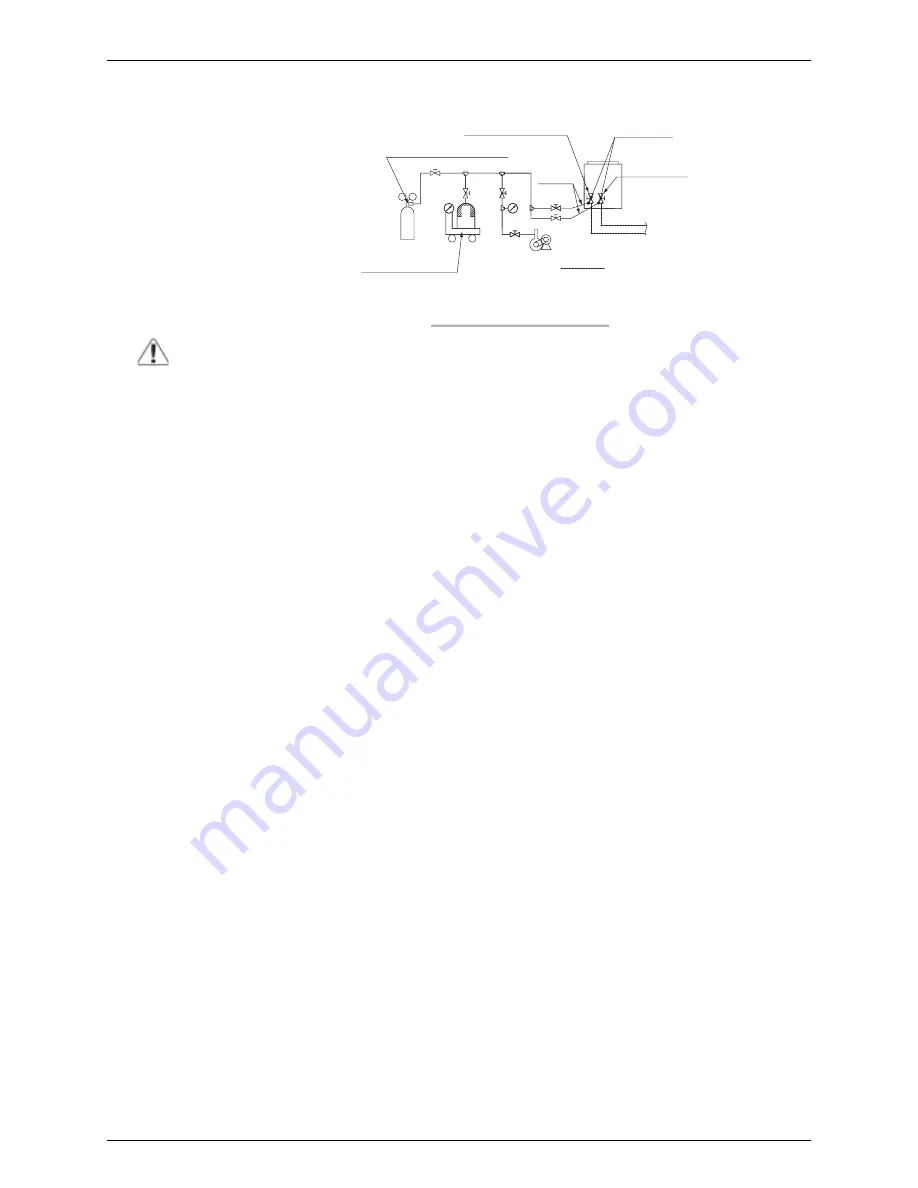
SiENBE28-901
Test Operation
Air Cooled Refrigeration Condensing Unit
67
Caution
Conduct an airtight test and vacuum drying precisely through the service ports of both liquid
and gas shutoff valves.
Use charge hoses (provided with a pushing rod each) when using the service ports.
In case of possible water intrusion into piping
Perform the above mentioned vacuum drying for 2 hours first in the following cases:
The product is installed in the rainy season, there is a fear of dew condensation resulting in the
piping because the installation work period is long, or there is a fear of rainwater intrusion into
the piping for other reasons.
Then
impose a pressure of up to 0.05 MPa
with nitrogen gas (for vacuum destruction) and
vacuum the unit down to –100.7 kPa or below for 1 hour with a vacuum pump
(for vacuum
drying).
Repeat vacuum destruction and vacuum drying if the pressure does not reach –100.7 kPa or
below after a minimum of 2 hours’ vacuuming. Leave the vacuum state for 1 hour then, and
check that the vacuum gauge reading will not rise.
5.3.2 Thermal Insulation Work
Be sure to perform thermal insulation of the piping after the airtight test and vacuum drying.
Be sure to perform the thermal insulation of the liquid and gas pipes in the connecting piping.
Otherwise, water leakage may result.
Be sure to insulate liquid and gas connection piping. Failure to do so may result in water
leakage. Consult the following chart as a general guide when selecting the insulation
thickness.
Liquid pipe arrival minimum temperature –10°C
Gas pipe arrival minimum temperature
–20°C (MT (Medium Temperature))
–40°C (LT (Low Temperature))
Reinforce the insulation material for the refrigerant piping according to the environment of
thermal installation. Otherwise, the surface of the insulation material may result in dew
condensation.
If the dew condensation water on the shutoff valves is likely to flow to the indoor unit side
through the clearance between the insulation material and piping because the outdoor unit is
installed above the indoor unit or for some other reasons, perform appropriate treatment
such as the caulking of the joints (see the illustrations below).
Attach the cover of the piping outlet with a knock hole opened. If there is a feature of small
animals intruding through the piping outlet, cover the piping outlet with a blocking material
(field supply) on completion of the steps of “
5.5 Additional Refrigerant Charge
” (see the
illustrations below).
Use the piping outlet for jobs required during the steps of “
5.5 Additional Refrigerant
Charge
” (e.g., a job of taking in the charge hose).
Gas side shutoff valve
Pressure-reducing valve
Charge
hose
(w
ith s
ipho
n)
Valve
R410A
Tan
k
Nit
rog
en
Used for refrigerant
replenishment
Meter
Connection procedure for gauge
manifold and vacuum pump
Note:
Field pipings
Vacuum pump
Shutoff valve
service port
Liquid side
shutoff valve
Outdoor unit
To indoor
unit
















































